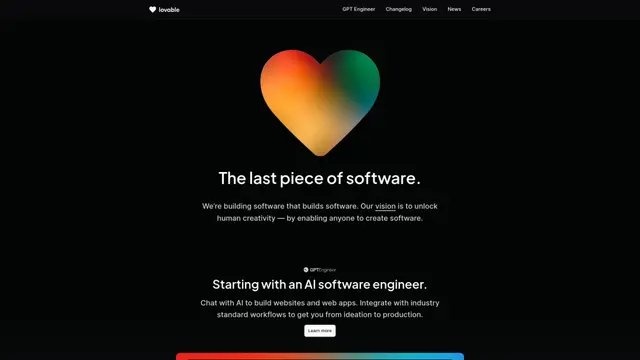
Google Android XR
Android XRは、AI、AR、VR機能をAndroidのエコシステムと組み合わせて、Gemini AIによって駆動される没入型コンピューティング体験を可能にするXR(拡張現実)ヘッドセットおよびグラス専用に構築されたGoogleの新しいオペレーティングシステムです。
https://blog.google/products/android/android-xr?ref=aipure&utm_source=aipure

製品情報
更新日:2025年07月16日
Google Android XR の月間トラフィック傾向
Google Android XRのトラフィックは12.2%減少し、直近の月間訪問数は850万件となりました。この減少の要因として、2025年6月のコアアップデートやAndroid XRの直接的な製品アップデートの不足が考えられます。また、競合他社の活動や市場の変動も影響している可能性があります。
Google Android XRとは
Android XRは、ヘッドセットとスマートグラスに拡張現実機能をもたらすために設計されたGoogleの最新プラットフォームで、SamsungおよびQualcommとの共同開発によるものです。2024年12月に発表され、人工知能、拡張現実(AR)、仮想現実(VR)を統合した次世代コンピューティングのビジョンを表しています。Androidの基盤の上に構築され、XRデバイスのためのオープンエコシステムを作成し、GoogleのGemini AIを活用してより自然で直感的なインタラクションを可能にすることを目指しています。
Google Android XRの主な機能
Google Android XRは、ヘッドセットやメガネなどの拡張現実(XR)デバイス向けに特別に設計された新しいオペレーティングシステムで、SamsungとQualcommとの共同開発によるものです。自然なインタラクションのためにGemini AIを統合し、Google Playからの馴染みのあるAndroidアプリをサポートし、仮想環境と現実世界の環境間でシームレスな移行を提供します。このプラットフォームは、AR、VR、AI機能を組み合わせながら、既存のAndroid開発ツールやフレームワークとの互換性を維持します。
AI駆動のアシスタント統合: 文脈を理解し、タスクを手伝い、ユーザーが環境で見ているものについて自然な会話を可能にする内蔵のGemini AIアシスタント
シームレスなアプリ互換性: 既存のAndroidモバイルおよびタブレットアプリのネイティブサポートに加え、XR体験に最適化されたYouTube、Maps、Photos、ChromeなどのGoogleアプリの特別版
開発者に優しいフレームワーク: ARCore、Android Studio、Unity、OpenXRなどの馴染みのあるツールをサポートし、開発者がXRデバイス向けにアプリケーションを作成または適応しやすくします
マルチ環境切り替え: ユーザーが仮想環境に完全に没入することと現実世界に留まることを簡単に切り替えられるようにします
Google Android XRのユースケース
没入型エンターテインメント: YouTubeやGoogle TVを通じて仮想の大画面で映画やビデオを視聴し、Google Photosで3D写真を表示する機能を備えています
生産性向上: マルチタスク用の複数の仮想スクリーン、Chromeブラウザのサポート、Circle to Searchを使用したジェスチャーベースの情報検索
ナビゲーションと翻訳: ARメガネを通じたリアルタイム翻訳とナビゲーション支援、電話を確認することなく方向と翻訳を提供
教育トレーニング: XRメガネやヘッドセットを通じたリアルタイムのチュートリアルと没入型学習体験
メリット
開発者やユーザーにとってアクセスしやすい、馴染みのあるAndroidエコシステムに基づいている
Googleサービスとの強力な統合とAI機能
主要メーカーとのパートナーシップを通じた広範なデバイス互換性
デメリット
まだ初期段階でデバイスの利用可能性が限られている
ユーザーに新しいハードウェア投資が必要
現実世界での使用とデータ収集に関するプライバシーの懸念
Google Android XRの使い方
デバイスの利用可能性を待つ: Android XRデバイスは2025年まで利用できず、SamsungのProject Moohanヘッドセットから始まります。ユーザーはハードウェアのリリースを待つ必要があります。
互換性のあるハードウェアを入手する: 利用可能になったら、互換性のあるAndroid XRヘッドセット(SamsungのProject Moohanなど)や、Lynx、Sony、XREALなどのパートナーからスマートグラスを購入します。
デバイスを設定する: Android XRデバイスを既存のAndroidフォン/エコシステムに接続します。必要なアプリをインストールし、Googleアカウントでサインインします。
基本機能を使用する: すぐに使えるGoogle PlayのAndroidアプリにアクセスします。情報を見つけるために、Circle to Searchのようなジェスチャーコントロールを使用します。ヘッドセットで仮想ビューと現実世界のビューを切り替えます。
Googleアプリを使用する: 没入型の3Dビューを持つ再構想されたGoogleアプリ(YouTube、Google TV、Photos、Mapsなど)にアクセスします。マルチスクリーンマルチタスクのためにChromeを使用します。
Gemini AIと対話する: Gemini AIアシスタントと対話するために音声コマンドを使用し、会話、タスクガイダンス、翻訳、見ているものに関する文脈情報を取得します。
体験をカスタマイズする: 3D空間内で仮想スクリーンとアプリを配置します。快適さとプライバシーの好みに合わせて設定を調整します。
Google Android XRのよくある質問
Android XRは、Samsungとの協力で開発された、拡張現実(XR)ヘッドセットおよび眼鏡専用に構築されたGoogleの新しいオペレーティングシステムです。AI、AR、VR技術を組み合わせて、コンピュータデバイスとの新しいインタラクション方法を可能にします。
公式投稿
読み込み中...Google Android XRの動画
Google Android XRウェブサイトの分析
Google Android XRのトラフィック&ランキング
8.5M
月間訪問数
#8357
グローバルランク
#353
カテゴリーランク
トラフィックトレンド: Nov 2024-Jun 2025
Google Android XRユーザーインサイト
00:00:53
平均訪問時間
1.93
訪問あたりのページ数
55.03%
ユーザーバウンス率
Google Android XRの主要地域
US: 26.94%
IN: 8.76%
GB: 5.14%
JP: 4.24%
DE: 3.01%
Others: 51.91%










